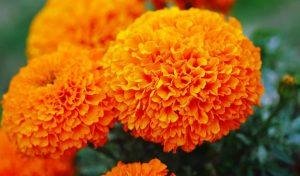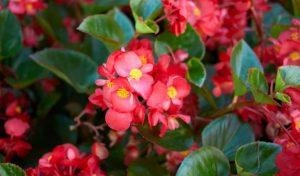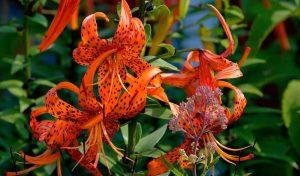The annuals that bloom all summer flowers are easy-to-grow plants that can grow in baskets, containers, and pots regardless of the size of garden. They thrive wonderfully in summer heat and direct sunlight. Summer annual plants are known for their brightly colored spectacular flowers.
Planting annuals in the spring and providing basic care for them in the growing season can reward you with endless summer color. Some annuals thrive in milder weather, while others require the heat of summer to grow.
Garden centers often sell the right annuals for the current or next season. This is especially crucial in early spring, when summer annuals have begun to grow in the warm confines of a greenhouse.
Top 10 Summer Annuals Flower Plants Blooms All Summer
Flowers are synonymous with love! The Flowers and magic are synonymous! And everyone loves this charming love of nature because the flowers are simply too charming and gorgeous to ignore. If you wish for 365 days of amazing love in your life, you must know about the top 10 flowers that bloom throughout the year.
These Flowers are the most beautiful creations of God, effortlessly capturing the attention of everyone around them. They are a magnificent component of Mother Nature that brings brightness, happiness and positivity to people’s lives.
1. Marigold

Marigolds (Tagetes spp.) are the most popular and reliable bedding flowers. These brightly colored blooms with fern-like leaves are true annuals, completing their life cycle in a single growing season. This plant looks like a daisy. Marigolds are usually planted early in the nursery or sown from seed in the spring, which grows rapidly.
Blooms vary greatly in size and structure, from the small single-petaled flowers of cygnet marigolds to the large 4-inch double-petaled flowers of African marigolds, but all have distinctive flowers that indicate their affiliation with the aster family.
Know more: Marigold Plant
Plant Overview
- Botanical Name: Tagetes spp.
- Family: Asteraceae
- Plant Type: Herbaceous, annual
- Mature Size: 4–48 in. tall, 6–24 in. wide
- Sun exposure: full
- Soil Type: Evenly moist, well-drained
- Soil pH: slightly acidic to neutral (6.0 to 7.0)
- Bloom Time: Summer
- Flower Color: Yellow, orange, white, red, gold, bicolor
- Native Area: Southern North America (Mexico)
2. Begonia

Begonias grow in humid tropical climates. There are several species of begonia plants which grows in humid climates in South and Central America, Africa and South Asia. Begonia is a flowering perennial genus in the Begonias family.
There are female and unisexual male flowers on the same plant. The male has many stamens, while the female has a larger ovary. In milder areas, various species are widely cultivated for house decoration. Those who can live in direct sunlight.
Plant Overview
- Family: Begoniaceae
- Botanical Name: Begonia
- Mature size: 6-12 inches tall; 12-24 inches wide.
- Plant Type: Annual and Bulb,
- Sun exposure: part sun, shade, and sun
- Soil pH: 5.0–6.5 (acidic)
- Soil type: high organic matter
- Native to: South America
- Flower colors: orange, white, pink, yellow
- Bloom Time: Fall Bloom and Summer Bloom
3. Zinnias

Zinnia flowers are a lovely addition to any garden. These flowers come in a variety of hues, and their relaxing perfume attracts butterflies, which only enhances the environment. These flowers bloom in the late summers of India and require little care.
Its beautiful green foliage is unique in itself; even as a miniature version, it has been compared to sunflowers. Given ideal growth circumstances, they blossom profusely.
Plant overview
- Botanical Name: Zinnia elegant
- Plant Type: Annual
- Mature Size: 1-4 ft. tall, 6-18 in. wide
- Sun exposure: full
- Soil Type: Well-draining
- Soil pH: neutral
- Bloom Time: Spring, summer, fall
- Flower Color: Pink, purple, yellow, orange, white, red, green
- Hardiness Zones: 3–10
- Native Area: South America, North America
4. Globe amaranth

Globe amaranth is easy to grow, and it grows quickly. It is a compact plant with upward-growing stems that blooms profusely in beautiful colors over a long bloom period from June to frost. These Globe amaranth annuals that bloom is started from seed in late winter or early spring and planted outdoors after the frost has passed.
The bracts of these flowers are attractive plants for butterflies and other pollinators. The apparent “flowers” of globe amaranth are actually bracts; the distinctive green leaves surrounding the flower are the true flower within this structure, which is insignificant.
Plant overview
- Botanical name: Gomphreena globosa
- Family: Amaranthaceae
- Plant Type: Annual, Herbaceous
- Mature size: 12-24 inches tall, 6-12 inches wide.
- Sun exposure: full
- Soil type: well-drained
- Soil pH: acidic, neutral
- Bloom Time: Summer, Fall
- Flower Color: Pink, Yellow, White
- Native area: Central America
5. Tiger lily

The tiger lily is an herbaceous perennial with a slow growth rate. Despite the fact that it is an Asian species, Tiger lily bulbs can be planted in the fall or spring and bloom in the summer. Strappy leaves and tall flowering stems characterize the plant.
Tiger lily blossoms have black markings on their petals. These Tiger lilies are usually orange, although a variety of colors are available, including red and yellow. The tiger lily blooms only once a year. However, they are more prolific than other lilies, producing up to ten flowers on each stem.
In addition to its beauty, the tiger lily is significant for its meaning: the flower is considered to represent prosperity, dignity, and grandeur. However, it is important to remember that while the flowers are edible, the pollen is harmful to humans. Tiger lily is harmful to cats and humans.
Plant overview
- Botanical Name: Lilium lancifolium (also Lilium tigrinum).
- Family: Liliaceae
- Plant Type: Herbaceous, perennial
- Mature Size: 3–5 ft. tall, 7–8 in. wide
- Sun exposure: full, partial
- Soil Type: Loamy, moist, well-draining
- Soil pH: acidic
- Bloom Time: Summer
- Flower Color: Orange, red, yellow, white, pink
- Native Area: Asia
- Toxicity: toxic to cats and humans
6. Vinca

Annual Vinca (Catharanthus roseus) is a tropical perennial that is planted as an annual in most parts of the world. Vinca is ideal for sunny settings. This annual bloom is sometimes known as Madagascar periwinkle.
Plant vinca seedlings after the last frost date in your area. Its foliage is leathery and dark green. Vinca grows 6 to 18 inches tall and spreads similarly, depending on the variety. Vinca plants produce solitary flowers with five petals that usually touch or overlap.
If you want to grow vinca in your garden, you should take a look at the new color palette, which includes flowers in every shade of white, pink, rose and lilac. They attract butterflies and repel rabbits.
Plant overview
- Botanical Name: Catharanthus roseus
- Family: Apocynaceae
- Plant Type: Herbaceous perennial, usually grown as an annual.
- Mature Size: 6-18 in. tall, similar spread
- Sun Exposure: Full sun, part shade
- Soil Type: Sandy Loam
- Soil pH: 6.0–7.0
- Bloom time: annual
- Flower Color: White, pink, mauve, red
- Native Area: Madagascar
- Toxicity: toxic to cats, dogs and people.
7. Cosmos

Cosmos are free-ranging annual flowers that can be grown from some seed in the garden after the frost has passed. These traditional flowers ripen in about two months. These Cosmos may take longer to germinate, but they bloom immediately and continue to flower into the fall. The cosmos flowers look like daisies.
The flowers sit on long, slender stems and look attractive all summer, attracting bees, butterflies, and birds to garden. They come in a variety of colors, with more cultivars being developed each year. The leaves grow in opposite directions on the stem and are deeply lobed, pinnate, or feather-like, depending on the variety.
Plant overview
- Botanical Name: Cosmos sulphureus, Cosmos bipinnatus
- Family: Asteraceae
- Plant Type: Annual
- Mature Size: 1-6 ft. tall, 1-3 ft. wide
- Sun exposure: full
- Soil Type: Well-draining soil
- Soil pH: 6.0–6.8 (acidic)
- Bloom Time: Summer through fall
- Flower Color: Golden yellow, white, pink, magenta, orange, yellow, red, chocolate
- Native Area: northern South America, Central America, and southern North Americ.
8. Bougainvillea

Bougainvillea is not your typical houseplant-in its natural state, it is a sprawling and vigorous thorny shrub, often found outside buildings in tropical gardens. Which are often little white, pink, or yellow buds Outdoors, Bougainvillea grows well. It needs a fairly warm temperature with moderate humidity. It may also be grown in pots.
Bougainvillea grows quickly, often adding more than 35 inches in length per year. Many people mistake the plant’s green leaves and brilliant pink, purple, and orange colors for flowers; however, these are the petal-like bracts that conceal the bougainvillea’s primary bloom.
Know more: Bougainvillea Plant
Plant overview
- Botanical name: Bougainvillea
- Plant type: perennial, shrub
- Mature size: 15–40 ft. tall and 15–40 ft. wide (outdoors).
- Sun exposure: full
- Soil type: moist but well-drained
- Soil pH: acidic
- Bloom time: spring, summer, fall
- Flower color: pink, purple, red, yellow
- Native area: South America
9. Coleus

Coleus looks very attractive with beautiful and variegated foliage, whether grown in full sun or shade. These Coleus plants have square stems and leaves facing each other. They produce tiny white flowers. Coleus foliage varies widely in shape, style, and color.
Grow outdoors in early spring with low humidity. Coleus spreads rapidly through stems. It grows to full size in one season. These annuals Colorful foliage looks beautiful in window boxes, outdoor containers, gardens, and hanging baskets. Coleus is usually grown as an annual. It also thrives in partial direct or partial sun. Coleus is poisonous to pets.
Plant overview
- Botanical Name: Plectranthus scutellarioides
- Family: Lamiaceae
- Plant Type: Herbaceous perennial (usually grown as an annual)
- Mature Size: 6-36 in. tall and wide
- Sun Exposure: Part shade to full shade
- Soil Type: Rich, moist, loose soil, well-drained
- Soil pH: slightly acidic to neutral (6.0 to 7.0)
- Bloom Time: Seasonal
- Flower Color: Blue to white
- Native Area: Asia
- Toxicity: toxic to animals
10. Cockscomb

Coxcomb has brightly colored blooms with a unique comb-like shape. This plant is part of the Amaranthaceae family under the genus Celosia. It has alternate, lance-shaped leaves that can be found in green or bronze, while its blooms are velvety red, pink, yellow, or white.
The velvety, large flowers retain their color even when dried, allowing them to be added to wreaths or dried flower arrangements. Although coxcomb is often grown as an annual, it can be used as a perennial in warmer climates and can tolerate low humidity and water.
Plant overview
- Botanical Name: Celosia argentea var. cristata
- Plant Type: annual, perennial
- Mature Size: 12 in. tall, 12 in. wide
- Sun exposure: full, partial
- Soil Type: Loamy, moist but well-drained
- Soil pH: acidic, neutral
- Bloom Time: Summer, fall
- Flower color: red, pink, orange, yellow, white
- Native Area: South America, Central America, Asia, Africa
These annuals will prove their worth to you with their long-lasting blooms, whether you start from seed or get a plant from a nursery. Most of these are really easy to maintain. Choose your favorite plants and enjoy their long-lasting beauty.
I hope this list has given you some ideas for bringing some life to summer garden annuals that bloom all summer.
If you are searching fresh and live houseplants online then checkout our extensive collection of amazing indoor and outdoor houseplants.
Also Read: 8 Best Fragrant Household Flowering Plants

